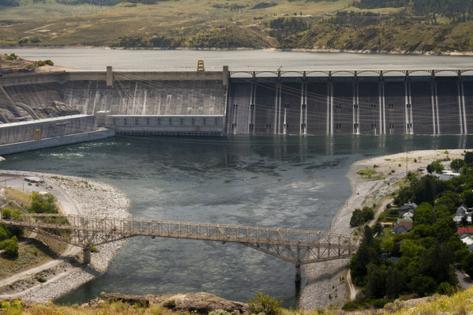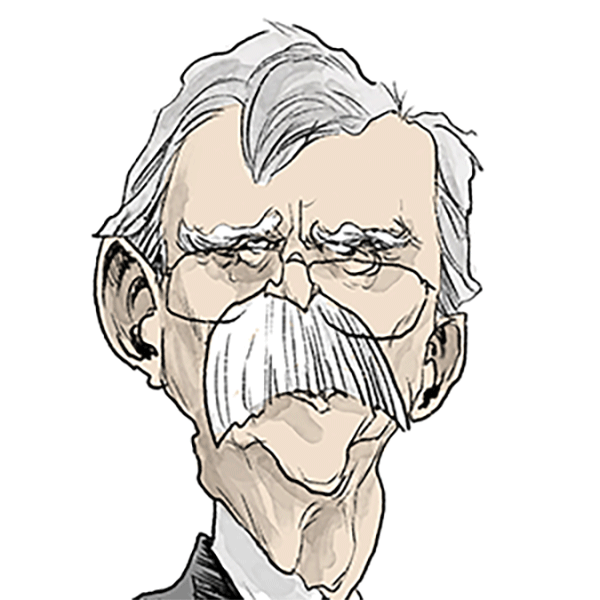Pacific Northwest could face energy shortage during extreme conditions, report says
Published in Business News
Does the Pacific Northwest have the energy it needs to prevent rolling blackouts? A new report commissioned by the region’s largest utilities has raised concerns.
Starting next year, the Northwest could face a power shortage that would challenge the reliability of the grid during extreme conditions, according to the report.
The report analyzed the region's energy plans against potential weather and hydropower conditions across Washington, Oregon, Montana, Idaho and parts of Utah and Wyoming. It found the highest chance of a rolling blackout during a dry hydropower year, combined with a dayslong cold snap.
To be sure, these are statistical projections, and a blackout is unlikely in the next five years. But they come at a time of unprecedented growth in energy demand, the shutdown of coal power plants and a lack of replacement resources. The report notes lots of new wind and solar power has been added to the grid in the past few years, but most has been outside of Washington and Oregon, and it has not been enough to replace the reliability of fossil fuels.
Coal plants have been retiring across the U.S., due to rising costs, cheaper forms of power and environmental regulations. A Washington clean-energy law prohibits power from coal after this year.
The concerns aren't news to power planners who have warned about a power crunch for years, even before data centers needed for streaming, cloud storage and artificial intelligence have increased, and the Northwest isn’t alone in these challenges. Extreme weather events, which are challenging reliability, have also been linked to spiking power prices and increased rates for customers.
The report was created by consulting firm E3, or Energy + Environmental Economics, and was sponsored by the Public Generating Pool, which includes publicly owned utilities like Seattle City Light, and by investor-owned utilities like Puget Sound Energy, Avista and Portland General Electric. It was presented to the Washington Utilities and Transportation Commission in late September and in early October at a Portland symposium with local lawmakers, regulators and electric and gas industry and utility leaders.
In general, utilities and planners try to ensure they have enough electricity so that the statistical likelihood of a power shortfall doesn’t exceed the rate of 24 hours every 10 years. The Northwest Power and Conservation Council also uses the standard of a 5% chance of power shortfalls in any given year. These potential outages are different from times when the power goes out due to damaged distribution lines or when a utility turns off the power to prevent wildfires.
Using historical weather patterns, hydropower data and various renewable energy scenarios, E3 simulated over 2,500 years of energy demand and generation to determine when outages might be most likely to happen, and how.
The most likely shortfall scenario would come during a year of bad hydropower and a winter cold snap.
The report found the power-reliability gap to be around 1,300 megawatts in 2026, eventually growing to around 8,600 megawatts in 2030 (for context, the state of Oregon has an annual capacity of roughly 9,000 to 10,000 megawatts). Though, there are around 3,000 megawatts worth of energy projects that will likely come online by 2030.
With drought and climate change, hydropower has become more variable and has forced utilities to turn toward fossil fuel for power. During rare winter cold snaps, wind may die down because of a high pressure system, and solar tends to be weak.
All this comes amid “once in a generation” growth in electricity demand, said Arne Olson, an E3 senior partner.
The forecasts for how fast electricity use will grow have only accelerated each year the Pacific Northwest Utilities Conference Committee has analyzed the region. In 2022, the group estimated that energy demand would grow around 0.9% each year, with the summer and winter peak growing at a similar rate. Today, energy demand is expected to grow 3.2% a year.
The demand is because of population growth, development, increased air conditioning, more electric vehicles and industrial users, like data centers.
Utilities can reduce demand on their systems through energy efficiency improvements or by asking consumers to voluntarily decrease their use, but those reductions won’t be enough to offset the increase in electricity demand, according to the report.
Fred Heutte, a senior policy associate with the Northwest Energy Coalition, said that while there is rightfully a lot of concern about these numbers, there are reasons not to be “freaked out.”
The Bonneville Power Administration, a federal power producer that is responsible for around a third of the power generated in the Northwest, is speeding up the process for energy projects to connect to the grid and the process to build transmission, Heutte said. These two issues alone have been a major source of headache for utilities.
“Broadly speaking, I would say we don't see any single resource providing any kind of magic wand answer. The real key here is to have a diversity of resources which we already know how to do,” he said.
Heutte also said he believes the forecast gap in power falls on the “high end” of possible scenarios. There is uncertainty about how many data centers will ultimately connect to the grid, and there may be ways to curtail their power use during extreme conditions, he said.
The report also analyzed the amount of solar, wind and battery projects utilities have said they intend to build by 2030. If all those materialize, that will be just enough to cover the forecast resource gap, said Olson, the senior partner at the firm that created the report. However, given federal changes in clean energy policy as well as labor and supply chain challenges of many utilities trying to build at once, it’s unlikely those will all be online by 2030, she said.
If a utility is facing a scenario where there is more demand than electricity they can buy or generate themselves, they will implement a rolling blackout. To “load shed,” utilities will often turn off the power in neighborhoods on a rotating basis, Huette said. Leading up to these potential power shortfalls, there are very strict federal guidelines about notifying customers and calling for emergency power from other utilities, he said.
In 2020, California instituted rotating outages over two days varying between 15 minutes and two and a half hours that impacted just under half a million customers. Much more severely, millions lost power during winter storm Uri in Texas in 2021. It led to more than 200 deaths, and the event was exacerbated by poor planning and coordination among utilities.
The Pacific Northwest came dangerously close to seeing rolling outages around January’s Martin Luther King Jr. Day weekend in 2024. During that weekend, Seattle saw highs between 25 and 36 degrees Fahrenheit and set an overnight record low temperature of 16 degrees.
In an assessment of the event, the Western Power Pool, an organization that coordinates utilities in the West, determined the conditions experienced during that five-day stretch “highlighted a tipping point and demonstrated how close the region is to a resource adequacy crisis,” adding that the Northwest was importing an average of 4,900 megawatts per hour from California, the Southwest and the Rockies during that time period.
The event was exacerbated by a low water year and cold weather in Montana, Olson said. The system was pushed to its limit as wind power across the Northwest dropped to zero.
The tightest moment came on Saturday that weekend when an unexpected outage hit the Jackson Prairie underground gas storage field, which is the region’s largest natural gas reservoir. The facility, which is just south of Chehalis, is co-owned by Avista, Northwest Pipeline and Puget Sound Energy, which operates the reservoir.
The outage only lasted a few hours, but during that time it wasn’t clear whether the facility would be able to feed gas to power plants or homes, Olson said. That day and the next, Puget Sound Energy asked customers to voluntarily conserve energy.
“It's one of those kinds of events that everyone who was working that day will remember for the rest of their lives,” Olson said.
Energy consulting firm E3 previously analyzed the Pacific Northwest’s “resource adequacy” in 2019 and found the region likely to face resource challenges by 2030, Olson said. That led to the formation of the “Western Resource Adequacy Program,” though siting, permitting and transmission delays have continued to hamper developers, he said.
©2025 The Seattle Times. Visit seattletimes.com. Distributed by Tribune Content Agency, LLC.












Comments